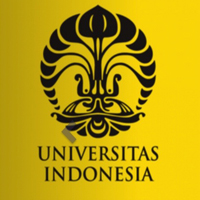Blow pinwheels improve oxygen saturation of preschool children with post pneumonia in outpatient pediatric departement

Published: 20 May 2021
Abstract Views: 2385
PDF: 577
Publisher's note
All claims expressed in this article are solely those of the authors and do not necessarily represent those of their affiliated organizations, or those of the publisher, the editors and the reviewers. Any product that may be evaluated in this article or claim that may be made by its manufacturer is not guaranteed or endorsed by the publisher.
All claims expressed in this article are solely those of the authors and do not necessarily represent those of their affiliated organizations, or those of the publisher, the editors and the reviewers. Any product that may be evaluated in this article or claim that may be made by its manufacturer is not guaranteed or endorsed by the publisher.
Similar Articles
- Sara Uccella, Agnese De Carli, Ida Sirgiovanni, Paola Schiavolin, Giuseppe Damiano, Beatrice Ghirardi, Francesca Maglioli Carpano, Laura Bassi, Silvana Gangi, Odoardo Picciolini, Monica Fumagalli, Fabio Mosca, Survival rate and neurodevelopmental outcome of extremely premature babies: an 8-year experience of an Italian single neonatal tertiary care center , La Pediatria Medica e Chirurgica: Vol. 37 No. 3 (2015)
- Giovanna Stringari, Giulia Barbato, Matteo Zanzucchi, Maddalena Marchesi, Giuseppe Cerasoli, Bertrand Tchana, Alessandro Gritti, Valeria Boccaletti, Alfonsa Anna Lombardi, Nicola Carano, Propranolol treatment for infantile hemangioma: a case series of sixty-two patients , La Pediatria Medica e Chirurgica: Vol. 38 No. 2 (2016)
- Roberta Barachetti, Elisabetta Villa, Mario Barbarini, Weaning and complementary feeding in preterm infants: management, timing and health outcome , La Pediatria Medica e Chirurgica: Vol. 39 No. 4 (2017)
- Sarah Abdelmohsen, Mohamed Abdelkader Osman, Hussein Ali Mostafa, Mohamed Fathy, Ibrahim Ali Ibrahim, Mahmoud Mohamed Mostafa, Almoutaz A. Eltayeb, Osama Abdullah Abdul Raheem, Rectovestibular fistula: Which surgical approach is suitable? A randomized controlled trial , La Pediatria Medica e Chirurgica: Vol. 44 No. 1 (2022)
- Leone Giordano, Salvatore Toma, Francesca Palonta, Roberto Teggi, Marco Zucconi, Stefania Di Candia, Mario Bussi, Obstructive sleep apnea in Prader-Willi syndrome: risks and advantages of adenotonsillectomy , La Pediatria Medica e Chirurgica: Vol. 37 No. 2 (2015)
- Meletios Kanakis, George Samanidis, Kyriaki Kolovou, Sotirios Katsaridis , Athina Maria Sait, Georgios Kourelis, Nicholas Giannopoulos, Dimitrios Bobos, Outcomes of delayed chest closure after congenital heart surgery in neonates , La Pediatria Medica e Chirurgica: Vol. 46 No. 1 (2024)
- Novita Agustina, Nani Nurhaeni, Happy Hayati, Right lateral position can improving oxygen saturation and respiratory rate on under-five children with pneumonia , La Pediatria Medica e Chirurgica: Vol. 43 No. s1 (2021)
- Rossella Angotti, Giulia Fusi, Elena Coradello, Clelia Miracco, Francesco Ferrara, Marina Sica, Alessandra Taddei, Gabriele Vasta, Mario Messina, Francesco Molinaro, Lichen sclerosus in pediatric age: A new disease or unknown pathology? Experience of single centre and state of art in literature , La Pediatria Medica e Chirurgica: Vol. 44 No. 1 (2022)
- Alessandro Calisti, Diaaeldinn Yaseen Salman, Kibreab Belay, Andrea Mombo, Boniphace Tresphory, Giovanni Giuliani, Martina Sertori, Gian Battista Parigi, The hidden burden of Pediatric urology in Sub-Saharan Africa: an analysis of hospital admission data from three East African Health Centres , La Pediatria Medica e Chirurgica: Vol. 46 No. 1 (2024)
- Sara Ugolini, Chiara Oreglio, Karl Christian Walsh, Antonino Morabito, Follow-up study of three cases of congenital microgastria , La Pediatria Medica e Chirurgica: Vol. 45 No. 2 (2023)
You may also start an advanced similarity search for this article.

 https://doi.org/10.4081/pmc.2021.263
https://doi.org/10.4081/pmc.2021.263




